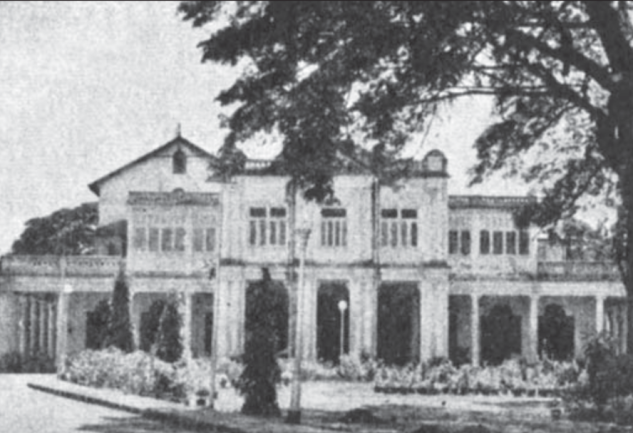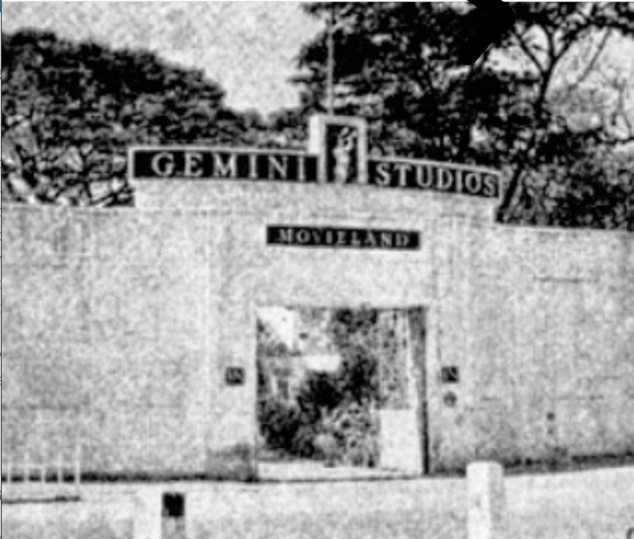Purasawalkam has a history of single-screen presence and all of them are not in today’s cinema map. One of them is Roxy, which was famous for screening English films till the 1980s. It had a majestic presence on Purasawalkam High Road, not far from the Doveton corner. Originally called the Globe, it Was built by the film pioneer Raghupathy Venkaiah in 1918 and hailed as one of the most significant architectural renderings of a cinema theatre in a long time.
Sadly the Roxy Building has been completely demolished and a shopping complex stands in its place.
Central Madras
NUNGAMBAKKAM TANK 1909
Lost Lake of Madras-2
The original extent of the tank is not clearly recorded, but from the old maps it is possible to guess that it was roughly bounded by the present Tank Bund, Valluvar Kottam, Kodambakkam High and Mahalingapuram Main roads. Once a vast waterbody serving the needs of the Nungambakkam village, but the years it had shrunk, and now there is no tank, only a congested clutter of buildings just as what you’ll see where the other important tanks of the city were none of them exist in today’s concrete jungle.
A part of the reclaimed land came to house the first Corporation High School, inaugurated in 1926. In 1958, a part of the lake land was allotted to Bala Bhavan, a school founded by the Nungambakkam Ladies Recreation Club. In 1963, the school renamed itself the Padma Seshadri Bala Bhavan and became the nucleus of the PSBB chain. At the westernmost end of the Tank, 54 acres were reclaimed earlier for the Loyola College campus and in 1974 what was left of the Tank was reclaimed to give the city the Valluvar Kottam campus alongside Tank Bund Road. 😱
Long Tank – Lost Lake of Madras
The Long Tank was a boomerang-shaped lake, about 6 km in length from the southernmost tip of what was called the Mylapore Tank to the westernmost tip of the tank it flowed into, the Nungambakkam Tank. The Mylapore Tank stretch was one of the early venues (1870s-90s) of the Madras Boat Club.
Mambalam’s urbanisation started in 1911 when the government constructed a railway station there, as a stop on the Madras-Kanchipuram line. Until 1923, the Long Tank was considered the western limit of the city. In 1923, the Town Planners decided that growing Madras needed more land for housing and proposed the Mambalam Housing Scheme for whose 1600 acres it became necessary to breach the Long Tank and let its waters into the Adyar. The breaching was done in 1930, and the development of Theogaraya Nagar (T’Nagar) began. Then, in 1941, the ‘Lake Area’ was developed on part of the Nungambakkam Tank and was followed by 54 acres being given for the campus of Loyola College. The last vestiges of the tank were handed over, in 1974, for the Valluvar Kottam complex.
Source: S.Muthiah | The Hindu | Sriram.V |dsal.uchicago.edu

The Cosmopolitan Club
The Cosmopolitan Club is one of the landmarks of the city. Founded in 1873, it was meant to be a place where Indians and the English could meet on an equal footing unlike the earlier clubs, such as the Madras Club and the Madras Cricket Club, that were only for the whites. The Club was initially at Moore’s Gardens, Nungambakkam, and moved to its present location in 1882.Set in a compound filled with trees, the club building is two-storeyed and is a traditional brick and lime structure.
The first Secretary was Captain Tyrell. The Club began with 40 members.The present property is said to have been the site of Simpson’s, coach-builders, or of Thomas Waller’s stables. It was bought by the Club for Rs.17,000. The purchase was funded through the issue of debentures to members.
It is one of the most popular clubs of the city, known for its South Indian cuisine and its facilities.
Source: Sriram.V
LOCATION
https://sriramv.wordpress.com/2014/07/09/the-cosmopolitan-club-a-brief-history/

The Cosmopolitan Club in 1956
Gemini Studios
Gemini Studios or, to give the place its propername, Movieland-Gemini Studios, was the best known among the several film studios of Madras.
The story of the property, at the intersection of Mount Road and Nungambakkam High Road, goes back many years. After passing into the hands of varios persons. In 1937, the property was purchased by film director K. Subrahmanyam who established a studio there for his Motion Picture Producers Combine (MPPC). It was here that some of his famous films, Thyaga Bhoomi (1938) included, were shot. On December 21, 1940, the studio was burned to the ground necessitating a distress sale of the land. It was bid for and bought by S.S. Vasan of Ananda Vikatan.
Renamed Gemini Studios in 1941, the property embarked on the most exciting phase of its existence. Several hits, including Chandralekha (1948), were made here, making Vasan a movie moghul. The studio was a cosmopolitan place with people from all over the country and even some foreigners working for The Boss as Vasan was always referred to. The golden era of Gemini was undoubtedly the 1940s and the early 1950s.
The Boss died in 1969 after a painful bout with cancer and with him much of the Gemini magic too went. His family decided to focus on his publishing activities and preferred to sell Gemini to developers.
Now it is nothing but a cluster of multi-storeyed buildings and a five-star hotel, but till the late 1960s this was the place that embodied cinema.
Source: Sriram.V | Madrasmusings | Vikatan
http://madrasmusings.com/Vol%2024%20No%208/madras-landmarks.html
http://madrasmusings.com/Vol%2023%20No%2012/when-the-bugles-blow.html



